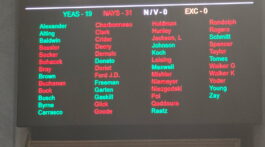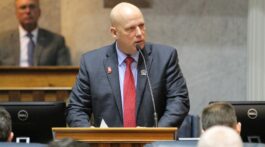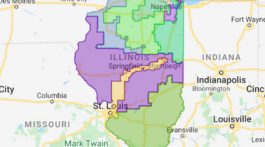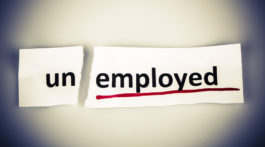Improving K-12 outcomes for students of all races and income levels and greatly elevating the postsecondary attainment levels of Indiana’s adult workforce are the most significant challenges facing the state, according to the Indiana Chamber of Commerce.
Chamber officials say Indiana is behind its competitor states when it comes to developing and establishing a well-skilled, well-educated workforce for the jobs of today and tomorrow. Currently, there are twice as many job openings in Indiana as there are jobseekers. And the workforce participation rate remains lower than before the pandemic started.
Indiana Chamber President and CEO Kevin Brinegar points to two key statistics: A little more than half of all Hoosiers age 20 to 65 with only a high school diploma are employed. For those with no high school diploma, 60% are not in the workforce.
The Indiana Chamber has developed a brief white paper called “Indiana’s Leaking Talent Pipeline” (www.indianachamber.com/talentpipeline) that delves into this dilemma and what can and must be done to right the ship.
There is a high level of alignment between the steps the Indiana Chamber believes should be taken to bolster the state’s overall talent landscape and the recent 30 recommendations from the Governor’s Workforce Cabinet.
Need to reduce your tax burden, advertise with Indy Politics. We’re a great business expense. Be sure to check with your accountant.
Brinegar, Jason Bearce, the Indiana Chamber’s vice president of education and workforce development, and Paul Perkins, the organization’s board chairman from Amatrol, a provider of online career and technical education solutions, were part of the workgroups that suggested and vetted recommendations to the Cabinet.
The Chamber says there are any number of actions lawmakers should strongly consider in the upcoming legislative session, but notes two are particularly vital in enabling young Hoosiers nearing the point of entering the workforce full time to realize their potential.
Indiana still has one of the lowest Free Application for Student Aid or FAFSA completion rates in the country. Legislation passed in 2022 ensures families receive information about FAFSA and its importance in accessing resources to pay for postsecondary education. But for the majority, the Indiana Chamber and others contend filling out the FAFSA form should be a requirement for high school graduation.
The 21st Century Scholars program is another area in which much needed process improvement and fulfillment needs to occur, Brinegar stresses. The initiative provides free college tuition for low-income students who graduate from high school and who have completed a short list of preparatory activities.
You can hear Brinegar and Bearce in the Leon-Tailored Audio above. Each segment runs 25 minutes.













